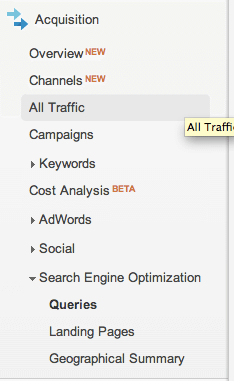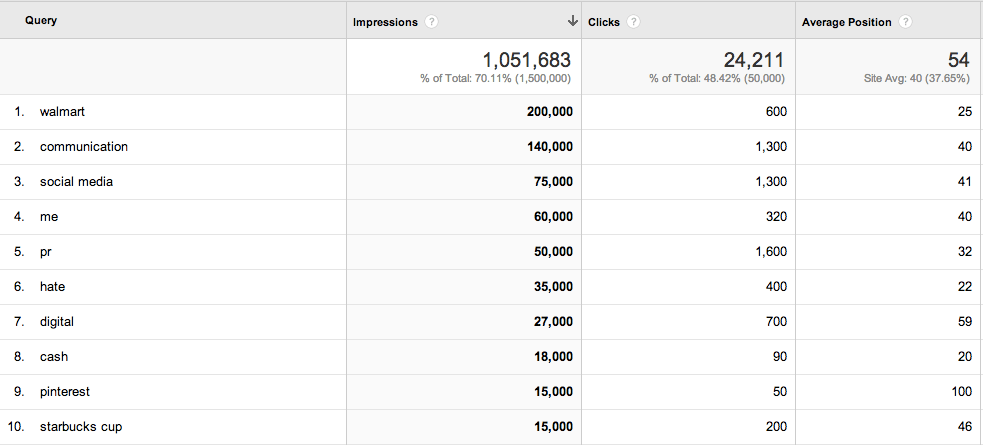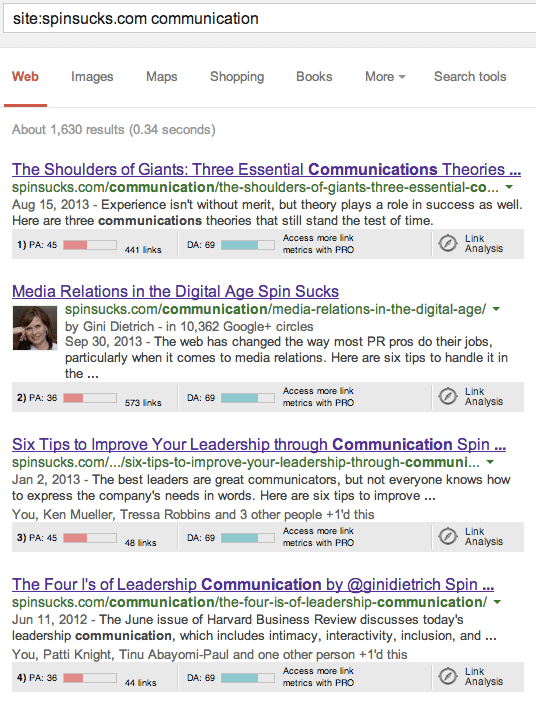A few months ago, I had taken the week off from meetings so I could get Spin Sucks mostly written and start on our 2014 plan.
I don’t know if you’ve ever tried writing all day, every day, but it’s not easy. In fact, it gets to the point where you look for other things to do (someone please call me!) to give your brain a break.
So, during my week of writing, I found myself digging into a client’s analytics to do a keyword analysis and give them some content ideas.
I was looking for keywords they ranked for, but not on the front page of search results. Then the idea was to go back and revise that old content to create a long-tail keyword opportunity.
Fast forward to yesterday when the CEO of the client’s company and I were chatting on Skype and he asked me the process for which I did that particular exercise.
Dig into Your Analytics
Here is what I did:
- Go into analytics and set the date range for the past 90 days (it won’t give you data beyond that).

- In the left-hand sidebar, click on “acquisition,” “search engine optimization,” and then “queries.” If your analytics are not connected with Webmaster Tools, it will ask you to do this before you can create a query.

- At the top of the query page, sort by “average position.”

- Set an advanced filter for average position.

- Set it greater than 10.

- Hit apply.
The chart the search provides gives you a good idea of what people are searching for, but not finding you on the first page of search results.
If, for instance, I want us to rank for “communication,” I have to create content around that term to get us from page four (position 40) to 10 or lower.
Keyword Analysis
That was the easy part and should have taken you only a few minutes. Now it’s time for the hard work: The keyword analysis will provide you a list of content you’ve already written (for us, it’ll be communication, social media, PR, digital, and Pinterest) and want to increase your results.
Open a Google search tab (or Bing or Yahoo or whatever you use) and type in site:yoururl.com keyword.
So, for instance, ours would be site:spinsucks.com communication.
You can see only one blog post in the first few that is more than a year old. On the rest of the page, there are two others. This is good! I’ll start with those.
I’ll open The Four I’s of Leadership Communication in WordPress and get to work.
Refresh Old Content
The process I’ll follow is this:
- Change the headline to Communication: The Four I’s that Are Important to Remember.
- Add “communication” as my keyword both in the post and in Yoast. Right now, it appears four times and the post is 849 words long. The keyword density is too low (less than one percent) so I need to add the word a few more times without making the copy sound ridiculous.
- The word doesn’t appear in any of my headings so I’ll add it to one of them.
- The word doesn’t appear in any of my anchor text to links. I’ll add that.
I’ll hit update. I may share it on the social networks again to drive some new traffic to it. And then I’ll watch my analytics.
The same process will be followed for the other blog posts that are a year or more old for that particular keyword.
The keyword analysis is actually the easy part. The tedious part – the labor of love, if you will – is refreshing the old content. But the results you’ll soon see – for the keywords that are important to you – will be worth it.
P.S. I didn’t come up with this idea all on my own. It’s from Andy Crestodina’s Content Chemistry. If you haven’t read it, I highly recommend you pick up a copy. It will soon sit on your desk like the dictionary and the AP Stylebook.


